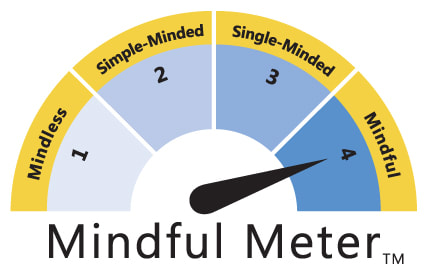Given the weighty issues facing our nation and our world, it’s not surprising that a variety of spots took on important social concerns like diversity, overcoming physical limitations, and the role of families. These ads gave us a warm hug and put a smile on our face.
However, a few days later, do we even remember the companies that paid $5 million for a 30-second spot. For instance, which firm showcased a variety of people serving others while an audio clip of Dr. Martin Luther King Jr. played in the background? The answer--Dodge Ram.
Dodge did attempt to make a reasonable connection between its trucks and the ad’s theme (“Built to Serve”), but most of the video footage had nothing to do with pickups (e.g., a pregnant woman having an ultrasound). Meanwhile a few very short clips of Dodge trucks were overshadowed by all of the ad’s other visual and audio activity. I doubt I would have remembered that the spot was for Dodge had I not been keeping track of every ad.
It was kind for Dodge to spend millions of dollars to extol service, but will one 60-second spot make people any more inclined to serve, and will they associate Dodge with that call to action? Two likely “No’s” make this ad and most of the game’s other social cause spots “Simple-Minded Marketing.”
Speaking of ambiguous advertising, there was also an ad that featured actor Keanu Reeves motorcycle surfing. Even as I wrote this paragraph, I remembered the ad, but couldn’t recall to whom it belonged until I checked my list and saw it was for the online website creation software Squarespace.
However, the fact that the commercial had no discernable connection to web design was not the ad's only problem. One can imagine that the stunt, which Reeves preformed himself, was extremely dangerous for him and other drivers, like the one in the pickup truck that flashes through the scene going the opposite direction about seven seconds into the ad.
The Los Angeles Times reports that 103.4 million people watched the latest Super Bowl, which represents every age demographic from toddlers to senior citizens and unfortunately includes any number of daredevils who need little encouragement to attempt Reeve’s stunt. The Tide Pod Challenge, which has killed at least eight people, is a tragic reminder of the power media has to spur irrational imitation. It’s irresponsible for Squarespace to glamorize another dangerous act, which makes its Super Bowl ad “Mindless Marketing.”
Thankfully there were also commercials for which it was very easy to identify the advertiser. Diet Coke’s Twisted Mango spot was one of those ads. The commercial is pretty simple in terms of its creative execution. A girl with short bangs and long legs mentions the name of the beverage and starts dancing. Could anything be wrong with that ad? Well . . . yes.
The dance gets a little “sexier” near the end, but that’s not the main concern. The potential issue is that the actress in the ad is extremely thin. Skinny people deserve to feel good about their bodies like everyone else, but this young woman looks emaciated, skeletal. In other product/ad contexts, such a body image might not be as problematic, but this commercial is for Diet Coke.
When people talk about dieting, it almost always means they’re trying to lose weight. About 30 million people in the U.S., or a little less than 10% of the population, suffer from eating disorders, which “have the highest mortality rate of any mental illness.” It’s reckless for the Coca-Cola Company to use an actress whose body type can easily become a dangerous aspiration for people already thinking about dieting. Diet Coke’s ad will likely help sell soda, but it’s “Single-Minded Marketing.”
There were many ads from the latest Super Bowl that both created stakeholder value and upheld societal values. One of the best of the lot was for Pringles snack chips. The Kellogg Company’s iconic chips-in-a-can have been around for over 50 years, during which time there have been some new flavors, but little else has changed. How, then, could the company get enough bang for the buck from a Super Bowl spot?
Kellogg’s rose to the occasion by using its ad to suggest a very simple yet intriguing concept: stacking different types of Pringles to create unique flavor combinations, for instance, jalapeño-barbeque-pizza. Such palette-pleasing options are probably especially appealing to Gen Z and Millennials, who likely are the biggest consumers of these types of snacks.
Two other things going for the ad were its use of comedian/actor Bill Hader, well known for his work on Saturday Night Live and recognizable to many young people. Also, TV viewers consume a significant number of snacks, especially while watching the Super Bowl. That relevant context makes remembering snack food ads easier, and all of the above make Pringle’s commercial “Mindful Marketing.”
Learn more about the Mindful Matrix and Mindful Meter.
Check out Mindful Marketing Ads and Vote your Mind!




 RSS Feed
RSS Feed